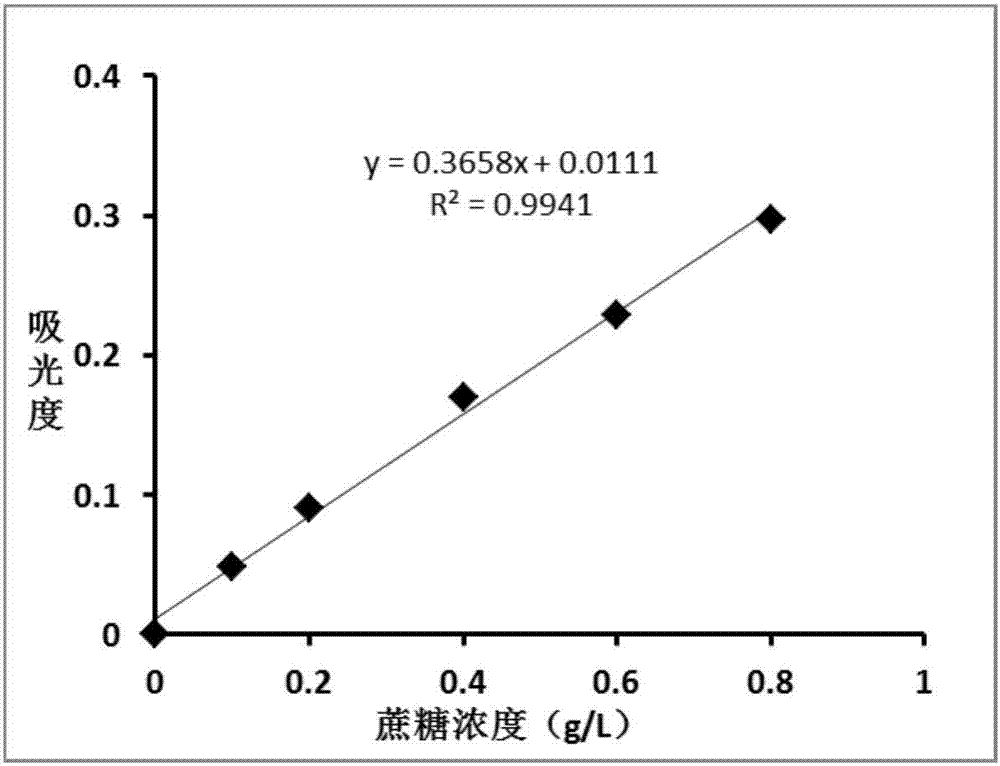Rapid detection method for doped cane sugar in tea
A technology of sucrose and tea, which is applied in the field of rapid detection of sucrose doped in tea, can solve the problems of direct detection interference, high professional requirements, and expensive detection costs, and achieve avoidance of heavy dependence, low requirements for specialization, and detection fast effect
- Summary
- Abstract
- Description
- Claims
- Application Information
AI Technical Summary
Problems solved by technology
Method used
Image
Examples
Embodiment 1
[0030] Embodiment 1, two tea samples (numbered as sample 1 and sample 2) are carried out the qualitative discrimination of sucrose doping
[0031] 1) Mix 100ml of concentrated hydrochloric acid and 100ml of distilled water to make reference reagent A; weigh 0.05g of resorcinol, dissolve it in 100ml of reagent A, and make color reagent B;
[0032] 2) Weigh 3.0 g each of the tea samples 1 and 2 to be tested, put them into teacups respectively, add 150 ml of boiling water to brew for 5 minutes, and drain them as tea soup 1 and tea soup 2 to be tested.
[0033] 3) Take four transparent glass test tubes of the same specification, add 5ml of reagent A to two of them, and count as a 1 tube and a 2 tube; add 5ml of reagent B to the other two, count as b 1 tube and b 2 Tube. in a 1 and b 1 Add 0.5ml tea soup 1 to be tested respectively in the tube; 2 and b 2 Add 0.5ml of the tea soup 2 to be tested into the tube respectively.
[0034] 4) Immerse the above four test tubes in a ...
Embodiment 2
[0035] Example 2, Quantitative Detection of Doping Sucrose Content in Tea
[0036] 1) Mix 100ml of concentrated hydrochloric acid and 100ml of distilled water to make reference reagent A; weigh 0.05g of resorcinol, dissolve it in 100ml of reagent A, and make color reagent B;
[0037] 2) Prepare standard solutions of sucrose with distilled water, the concentrations are 0.10g / L, 0.20g / L, 0.40g / L, 0.6g / L, 0.80g / L respectively. Pipette 9 mL of chromogenic reagent B into each test tube, and pipette 300 μL of water (for blank control) or sucrose standard solution into each test tube, and shake well. At the same time, put the test tube into the boiling water bath and heat it for 4 minutes, take it out, and immediately cool it to room temperature with tap water. Under the condition of a wavelength of 485 nm, the absorbance of each solution was measured using a spectrophotometer. With the concentration of sucrose standard solution as the abscissa and the corresponding absorbance value ...
Embodiment 3
[0043] Embodiment 3, standard addition recovery rate experiment
[0044] Configure the reagents and tea soup samples according to the conditions of the aforementioned Example 2, and draw the working curve. Add sucrose at four concentration levels of 0, 0.2, 0.5, and 1.0 g / L to the tea soup sample to be tested, and determine the recovery rate of the detection method. The experimental results showed that the recovery rate of the method was 90.5%-98.2% at the spiked level of 0.2-1.0 g / L. The specific experimental results are shown in Table 2:
[0045] Table 2
[0046]
PUM
| Property | Measurement | Unit |
|---|---|---|
| wavelength | aaaaa | aaaaa |
Abstract
Description
Claims
Application Information
 Login to View More
Login to View More - R&D
- Intellectual Property
- Life Sciences
- Materials
- Tech Scout
- Unparalleled Data Quality
- Higher Quality Content
- 60% Fewer Hallucinations
Browse by: Latest US Patents, China's latest patents, Technical Efficacy Thesaurus, Application Domain, Technology Topic, Popular Technical Reports.
© 2025 PatSnap. All rights reserved.Legal|Privacy policy|Modern Slavery Act Transparency Statement|Sitemap|About US| Contact US: help@patsnap.com



